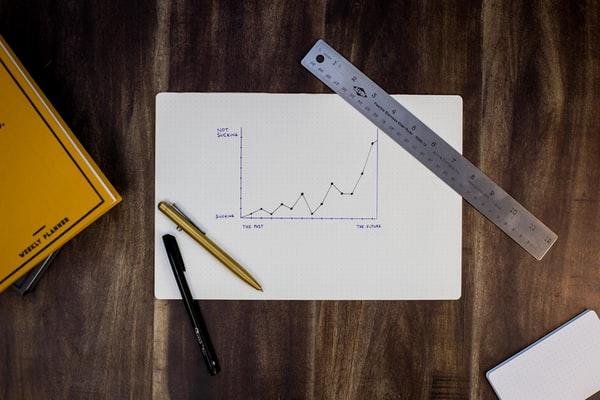Logarithmic charts are a type of graph that uses a logarithmic scale. This scale is used to compress or extend certain sections of the graph. This is useful when there are large variations in the data being graphed. Keep reading to learn more about logarithmic charts, how to use them, and how to create one of your own.
How do you create a logarithmic chart?
To create a logarithmic chart in Excel, you will need to use the LINEST function. This function takes a range of data as an input and calculates the best linear fit for that data. To create a logarithmic chart, you will need to use the LOG function, which takes a number as an input and calculates the logarithm of that number.
The following steps will show you how to create a logarithmic chart in Excel:
1. Enter your data into a range of cells in Excel.
2. In a separate cell, enter the formula =LINEST(log(A1:A12),B1:B12,0,TRUE).
3. This will calculate the best linear fit for your data and will also create a logarithmic chart.
4. To change the vertical axis on the chart to logarithmic, click on the chart, and then select the “Format” tab.
5. Under the “Axes” section, click on the “Axis Options” button.
6. Select the “Logarithmic” option for the “Scale” setting.
7. Click “OK” to save your changes.
How do you interpret a logarithmic chart?
To read a logarithmic chart, you need to understand what a logarithm is. A logarithm is a mathematical function that takes a number and returns another number which is the result of multiplying the original number by a fixed base. For example, the logarithm of 100 is 2, because 10 to the second power is 100.
The logarithmic chart is used to show data that is in geometric progression. This means that the values on the chart increase at a fixed ratio. In other words, the distance between each value on the chart is always the same. For example, if the chart showed the population of a town over time, the distance between each value would represent the increase in population from one year to the next.
To read a logarithmic chart, find the value that you are interested in and then look for the line that corresponds to that value on the chart. The line will be curved, and the slope of the line will be the same as the ratio between the values on the chart.
What are some of the key features of a logarithmic chart?
The y-axis on a logarithmic chart will always start at zero and the x-axis will show equally spaced divisions, regardless of the actual size of the data points. This makes it easy to compare values that are of different sizes. Logarithmic charts can also be used to show exponential growth or decay (data that is growing or shrinking at a consistent rate).
Are there any downsides to using logarithmic charts?
Logarithmic charts are used to display data that is in exponential or logarithmic form. This type of chart is beneficial because it can help to show trends and patterns that may not be visible on a standard linear chart. However, there are some potential downsides to using logarithmic charts. One downside is that they can be difficult to read and understand, especially for those who are not familiar with the concept of logarithms. Additionally, because the data displayed on a logarithmic chart is usually non-linear, it can be challenging to use this type of chart for trend analysis or forecasting purposes.
What mistakes should you avoid when working with logarithmic charts?

When working with logarithmic charts, there are a few mistakes that you should avoid. First, always use the base 10 logarithm scale for your chart. This will ensure that the chart is properly scaled and that the values are accurate. Additionally, be sure to use proper labels and units on your axes. Make sure that the y-axis starts at zero and that the x-axis is properly labeled with appropriate units. Finally, make sure that your data is evenly spaced on the x-axis. If your data is not evenly spaced, it will be difficult to read the chart correctly.
Overall, logarithmic charts are an important tool for data analysis.
Leave a Reply